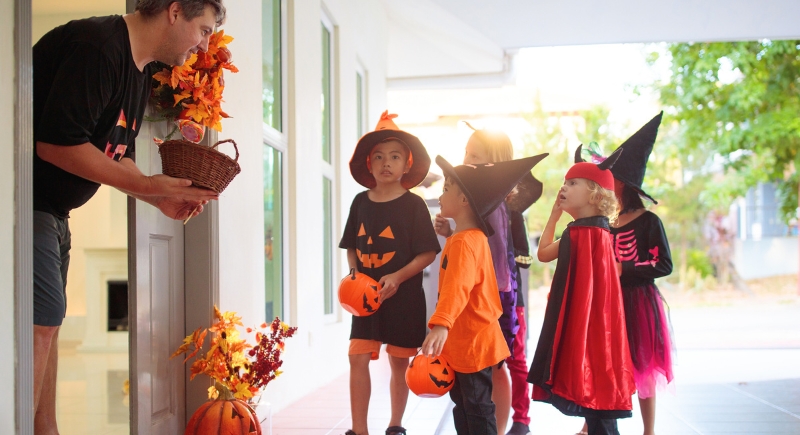Why Nobody Seems to Trick-or-Treat Anymore
If your doorbell didn’t ring much on Halloween, you weren’t alone. Across the country, people reported far fewer trick-or-treaters than they expected. In fact, three-quarters of respondents to a poll said they had lower turnout this year. In addition to this, surveys and smart home camera data pointed to a widespread drop in activity. And while trick-or-treating still exists, it no longer plays the central role in Halloween that it once did.
Trick-Or-Treating Happens Less Often on Halloween Night

Image via Getty Images/FamVeld
Halloween used to be an evening celebration, but now it often happens during limited hours set by local officials. In some places, trick-or-treating ends before sunset. Certain towns only allow it the weekend before Halloween unless the holiday falls on a Saturday. These restrictions create scheduling problems for working parents and reduce visibility in neighborhoods.
In some communities, there are also age limits in place that bar older children from participating. All of these changes reduce the number of participants and limit the experience for kids. Unlike earlier decades, when Halloween night meant door-to-door excitement after dark, the modern version looks much more contained. People who can’t fit the city’s rules into their schedules may just skip it. Such modifications, intended to make the holiday safer and more predictable, have made traditional trick-or-treating less accessible.
Community Events are Replacing Neighborhood Traditions
Trunk-or-treating events, where kids walk between decorated cars parked in a lot, have become a new Halloween standard in many places. Originally designed to provide a safer alternative, these gatherings now attract large numbers of families. Schools, churches, police departments, and even college campuses organize them. These gatherings offer controlled environments with good lighting and less walking. Meanwhile, parents prefer them because they can supervise kids easily without worrying about street safety or traffic.
Social media has helped popularize the trend by encouraging families to create elaborate trunk setups for photos and videos. Several communities hold these get-togethers before Halloween so people may attend instead of going door to door. The convenience and safety make them more appealing to many, especially younger children.
Rising Costs are Reshaping Halloween Habits

Image via iStockphoto/Panuwat Dangsungnoen
In 2023, inflation affected nearly every aspect of Halloween. Candy, costumes, and decorations all cost more, and various households adjusted their plans accordingly. Some chose not to decorate their homes at all, while others skipped handing out candy due to budget concerns. For parents who had already stretched thin, the added expense of celebrating Halloween the traditional way didn’t feel justifiable. Cold weather added another complication. On Halloween night, much of the country saw below-average temperatures, and various areas even issued freeze warnings.
In places where families expected harsh conditions, many stayed home or found indoor events instead. The cost of warm costumes or accessories only added to the financial pressure. When entire blocks reduce their interest, kids and parents notice. That discourages others from going out, which leads to even lower turnout the following year.
Participation Depends More on Location Than Tradition
In certain areas, trick-or-treating remains strong. Big cities like New York saw high activity in 2023, with different neighborhoods reporting more kids than any year since before the pandemic. But that activity often reflects highly localized enthusiasm rather than a national trend. Some families drive to specific areas known for safety or decorated homes.
Consequently, Utah reported the highest participation, with nearly five trick-or-treaters per home. On the other hand, states like Hawaii and Vermont recorded the lowest numbers.